26th July - 4th Auguest 2012
Cambodia
7684 - 7853km
Poipet – Siem Reap – Angkor
The happy, the hot, and the chitinous
Any of you wanting directions from the Thai border to Siem Reap I'll tell you now, they're dead easy. You go straight, okay. After about 60km there's a junction, don't take it, just carry on going straight. That's it. For 170km.
The roads in Cambodia are a good indicator of the state of development here. This is a place that's been largely left behind by the economic boom that blessed much of the rest of the region through the 90's. Even this sealed 'highway' that connects the western border with Siem Reap and Phnom Penh was only completed a few years ago, and it's more akin to the kind of narrow rough edged minor roads that connect market towns in rural England than anything we might call a main road. Narrow though this road may be, it is surrounded on all sides by a staggering landscape of grass and cultivation that reaches on and on to the horizon. This is a country of straw-roofed shacks, dusty trails, and mile after mile of sun-drenched rice fields.
After the vertiginous sense of space, the next thing that really struck us about Cambodia was the incredible friendliness and genuine warmth of the people. Motorcyclists flash us smiles as they zip by, cars honk and wave from time to time, and when we pull over for a rest from the heat the people are friendly and interested without being rude or encroaching on our personal space, as was sometimes the case in Java.
We expected language to be a big problem here, especially since we had no phrasebook and only a few basic words jotted down in our notepad, but even in remote farming villages a surprising number of people spoke some basic English. As shop keepers hacked open coconuts for us they asked us where we were going, pointed down the road to reassure us that we were going the right way, then handed us our coconuts, popped a straw in the top, and left us to it.
The kids on the other hand. Wow. Their enthusiasm towards foreigners is unmatched by anything we've ever come across. So friendly in fact, that it's downright dangerous!
Riding down the road we'll suddenly hear an excited squeak of “HELLO!” from... somewhere. More squeals and giggles as other little voices join in the chorus, but all we can see is rice fields and trees. Then, there they are! Up a tree. A little gang of smiling youngsters waving their hands furiously.
“Hello!” we cheer back at them, one hand off the handlebars to wave. From the opposite side comes another cry, some disyllabic approximation of hello from a dusty faced toddler, pottering up a driveway trying to figure out how to walk and wave at the same time.
Swap hands round, quickly check we're not going to crash into anything, turn to face him “Hello!”
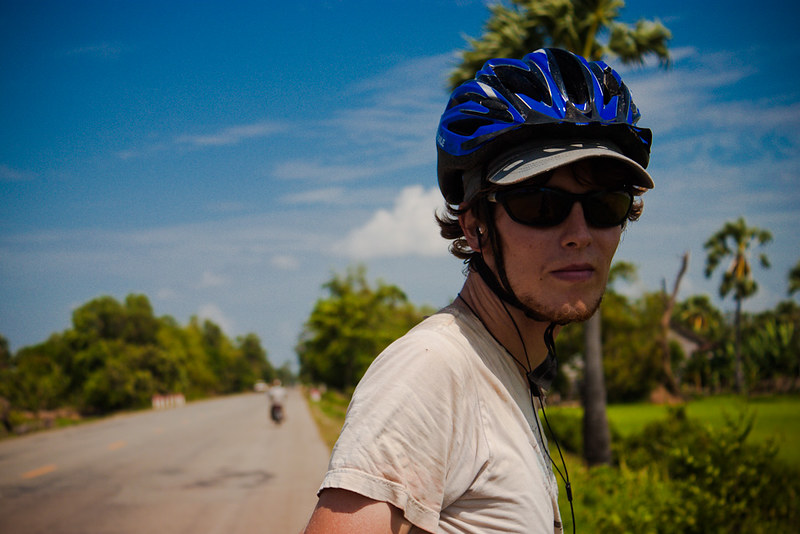 |
| "I need your clothes, your boots and your bicycle helmet." |
Sometimes it happens two or three times like that, but occasionally we've spent the best part of 15 minutes waving and calling to whole towns of excited children. When compared to our problem with dogs Thailand, Cambodia's main dangerpoint – nearly crashing because you're being ambushed with greetings from cute kids – makes it utopian.
And Cambodian dogs for that matter, excellent animals. Some of them look a bit gaunt but the whole ride to Siem Reap, and for that matter from Siem Reap to Phnom Penh, was completely free from any barking or chasing. How good is that! I bet they'd wave and say hello if they knew how.
We went easy on ourselves on our first afternoon after the morning border ordeal. We stopped overnight in a hotel at the junction town of Sisophon before getting up early to clear up the remaining 110km to Siem Reap. Although it was grindingly hot by midday, and our lunch was chitinous, the awesome sweep of the plains coupled with the festival of excited children whenever we hit habitation made for some very nice riding indeed.
Angkor rising
Cambodia serves as a rather sobering reminder of the habit of even the mightiest of empires to crumble and crash. Even Siem Reap, one of the largest cities in the country, is more large-town than city, with only a handful of buildings rising up above three stories, and dirt tracks worming through the spaces between them.
Of course it's lively enough though, with a throbbing tourist heart of pizzerias, bars and market stalls, because this is the place to go if you want to witness those sleeping giants of Cambodia's formidable days of glory; the jungle ruins of Angkor.
 |
| Cambodia is a country rooted in agriculture. |
For unknown reasons, but perhaps as a defensive strategy against enemies from Vietnam and Java, the 9th century saw the king of the Khmers move his people upstream to the northern banks of the mighty Tonle Sap lake in the centre of the country. Evidently this was a wise move. Fuelled by rice from these nutrient rich flood plains, and driven by their imposing god-like ruler, the Khmers began to conquer and draw tribute from the lands around them. Vietnam, Laos, Thailand and northern Malaysia, all bowed before them.
 |
| They displayed their victorious battles on the stone carvings for all to see. |
Mount Lucky
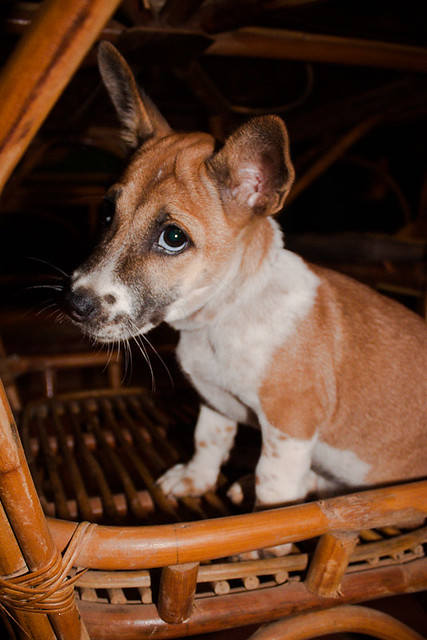 Before we started our exploration of the the Angkor archaeological park, we had a few tourist dollars to sling in the direction of some accommodation. We nailed a lovely place, out in the periphery along a dust track in a nice quiet part of town. Soksan Angkor Garden, it had spacious rooms with bathrooms for $6 a night. The owner, a Korean guy called David, was a lovely bloke, as were all his staff, and we enjoyed sitting around in the restaurant with them, typing up the blog and watching snippets of the Olympics, or Korean pop videos on TV.
Before we started our exploration of the the Angkor archaeological park, we had a few tourist dollars to sling in the direction of some accommodation. We nailed a lovely place, out in the periphery along a dust track in a nice quiet part of town. Soksan Angkor Garden, it had spacious rooms with bathrooms for $6 a night. The owner, a Korean guy called David, was a lovely bloke, as were all his staff, and we enjoyed sitting around in the restaurant with them, typing up the blog and watching snippets of the Olympics, or Korean pop videos on TV.
By far the biggest character of the place though was the in-house puppy, a boisterous little guy that chased you and tried to lick between your toes if you walked by with flip flops on. He was a sweet little scamp, but his habit of chewing up any shoes left lying around outside occasionally got him in our bad books. Liv's poor sandals got savaged, and had to be repaired with zip-ties and gaffa tape.
Sharing the guesthouse with the dog was a cute little kitten called Lucky, a sadly misleading name given what he had to endure. When we first met Lucky he was being pinned down by the back of the head and mounted by some vague urges simmering in the puppy's mind.
We saw them almost everyday, the two of them wrestled around a lot in apparently good humour (the cat never got its claws out) but these duels invariably ended with the cat mewling something like “STOP!”, pinned to the ground with the puppy scrabbling around on his back.
 The cat would retreat to a high chair and sit there proud, washing its paws as we walked through the restaurant, the puppy yapping at the foot of the chair but unable to climb up to reach it. Minutes later a crash and a cry, and the kitten pinned by the back of the head next to the cushion that had been dragged down by the eager dog. Their battles always ended the same way.
The cat would retreat to a high chair and sit there proud, washing its paws as we walked through the restaurant, the puppy yapping at the foot of the chair but unable to climb up to reach it. Minutes later a crash and a cry, and the kitten pinned by the back of the head next to the cushion that had been dragged down by the eager dog. Their battles always ended the same way.
Lucky would occasionally disappear for a day or two. We wonder how long he'll stick around before it gets too much for him and he goes for good. He's obviously not happy with the dog, it just seems like he has to stay around in order to get even, but he's playing a dangerous game.
Tension of some kind was obviously high between them. We found the puppy causing mischief by our shoes one afternoon, so we gave it a scolding, then rolled it onto its back and tickled its belly to show we didn't really mean it. Taking its chance, with the enemy at his most vulnerable, Lucky came bolting out of nowhere to lay his paws into his adversary. He started out well, but then the puppy broke all the rules of gentlemanly combat by biting him right in the balls and shaking him around. The cat let go mewling in horror, the puppy got a hold behind his neck, and the cat lay mounted and defeated once more.
The morning after we checked in to our hostel we were up bright and early, pedalling the 15km north of Siem Reap to the ruins of the Angkor Kingdom. We spent three full days over the course of a week exploring the ruins, taking days off between to relax and recover, and let it all sink in.
Coming in from the south our first hint to the spectacles ahead was the deep trench dug around the ruins of the stately temple of Angkor Wat. This watercourse, the width of two football pitches laid end to end, and running about 1km2 around the man made island, made clear to us the power that these people wielded. Even with modern machinery such an undertaking would take years, just imagine how long it would take armed only with spades.
Angkor Wat is believed to have been a temple tomb to one of the middle kings of the empire. Although it's stand out feature is most certainly the exotic rounded towers that spring up from its centre, in its layout it is – to my mind – evocative of grand European architecture, with an expansive walkway leading in to a world of columned archways and open courtyards. Angular, sullen and stern.
From Angkor Wat the road continued north and into the jungle. Tuk tuks buzzed to and fro, and food stalls called out to us whenever we got close enough. The canopy closed above us, shielding us from the heat and forming a tall, dappled corridor that led us in to one of Angkor's ancient walled cities.
The jungle broke as it hit another colossal trench of water, spanned by a flat stone bridge. There, flanking each side, were a line of gorilla-sized statues of demons and gods locked into some kind of divine game of tug of war with a great serpent of Hindu mythology.
As we rolled into this clearing the face of a giant appeared high above us. A stone head, taller than a man, watched us with a serene expression from its high perch atop the great stone archway leading in. Seeing it for the first time sends a bolt down your chest, I tell you, and we both padded to a halt on our bikes and gazed.
This monumental head was joined by two others facing profile, sprouting like ears from the side of the first, and as we pedalled beneath the lofty stone gateway – the kind of entranceway usually reserved for the likes of King Kong – another stone face was there to watch us as we came out the other side. Four faces, disarmingly human, that had kept watch on the four compass points as their masters fell, and their kingdom sank into the soil.
Very little is left of the city that once bustled within the walls. Almost all of the buildings, even the royal palace, were made from timber that has since rotted and been taken up by the jungle. For minutes we rode along a lane surrounded by nothing but tall trees and jungle vines, although we did pass a sortie of naughty monkeys scouring the area for any unwitting tourists with food to snatch.
 |
| Building whopping temples really works up an appetite. |
Taken in terms of area, ancient Angkor was as vast as modern day Los Angeles, and holds the title of the largest pre-industrial city in the world. Ever. Unless this recession gets really serious then that title ain't going to be taken from them.
Through the jungle more faces appeared, staring out at us from a jumbled mountain of masonry in an approaching clearing. This was the Bayon temple, crowded with these huge fourways facing heads, and something of a mess at first glance.
But it's definitely our favourite. Cycling around it, whenever you hit the cardinal points the chaotic heap of stones snap into order – stone pinnacles stand at regular intervals, the rocks emanate out from central archways like crinkled waves, and the great heap is capped at its centre by a blunt tower of stone that scrapes at the sky above the canopy. Bayon is a compressed maze of masonry that never quite reveals itself, but constantly shifts, like the patterns on tigers eye quartz.
 Once through the outlying courtyard the complex presses in on you. Collapsed archways force you down narrow corridors that scrape your shoulders as you walk. Worn outlines of gods dance along the walls, moss blooms in the patterns in the awnings, and bats squeak and click through the damp shadows. This is the setting for a thousand Indiana Jones fantasies, and Nintendo flashbacks to the dungeons of Hyrule.
Once through the outlying courtyard the complex presses in on you. Collapsed archways force you down narrow corridors that scrape your shoulders as you walk. Worn outlines of gods dance along the walls, moss blooms in the patterns in the awnings, and bats squeak and click through the damp shadows. This is the setting for a thousand Indiana Jones fantasies, and Nintendo flashbacks to the dungeons of Hyrule.
Up a narrow flight of stairs we emerged onto a high, surreal plain. A kind of plateau that circled the central peak, invisible to the world below, and walled in by enigmatic giant heads. They're unmistakably Cambodian, these prodigious heads, with high cheek bones and broad features. With eyes half closed it's as though they're recalling their glory days, and are unable to suppress a wry, knowing smile.
Some of the other highlights included the root-choked temple of Ta Prohm, the Aztec-like pyramid of Baphuon, and the staggering strip of pop out stone carvings of the heavy duty weapons, the war elephants, that the empire once had at its disposal.
For all its way with stone though, they do seem to have been a bit of a brutal bunch. Their legal system, for example, doesn't exactly chime with our notion of justice. If you were suspected of a crime they might throw you in a crocodile infested lake. If you made it out alive you were probably innocent.
Some of the kings, it is true, did build hospitals to care for their subjects, but it seems that the serfs here weren't always treated so favourably. Our only eyewitness to the contemporary world of Angkor, a Chinese emissary by the name of Zhou Daguan, tell us how captains of war elephants would keep their animal's brow lubed up with human gall. When this goo dried up or needed replacing a man with a special knife would jog up to the nearest peasant, pierce the required organ, and drain the unfortunate fellow of his gall before pasting it on the elephant. Suddenly our politicians and bankers don't sound so bad after all, do they?
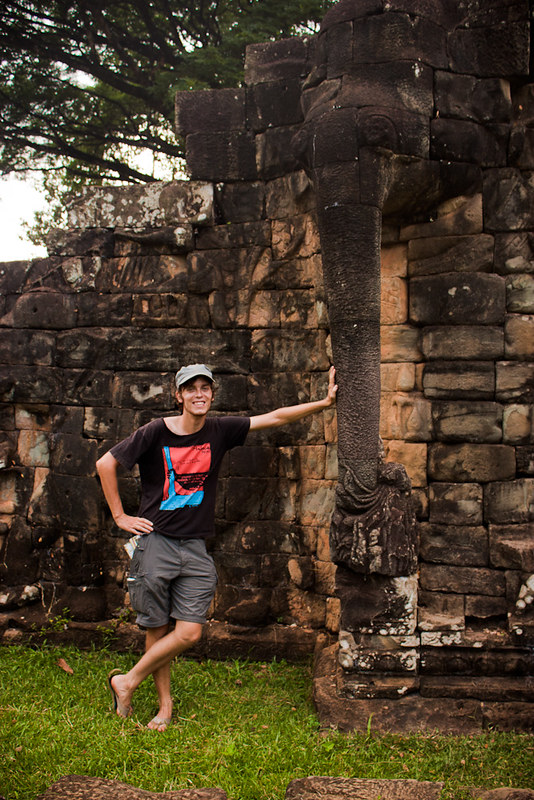 |
| The terrace of elephants, 300m of almost life sized depictions of war elephants. |
A night on the town
We struck it lucky in Siem Reap. Between our forays out into the ruins we enjoyed some great times with some really very excellent people. During our first day among the ruins we were stopped by a couple around our age who had noticed that ours were not the kind of bicycles you could rent around here.
“Are you guys on some kind of a cycle tour too?” they asked.
This was the first time we'd bumped into fellow tourers when we were on an off-day, and we quickly made arrangements to meet up that night for some beers and good times. They went by the names of Tim and Barbara, and they were really cracking company. We met up with them in the midst of the tourist quarter that night, and also got their two Dutch friends, Floor and Remko into the bargain.
 |
| With Remko, Tim, Floor and Barbara |
After dinner we stumbled back across town and found ourselves draining beers in a rooftop bar with an open-top dancefloor while a storm blasted rain inside and whipped at the tarpaulin in the streets down below. It was late, going on early, and we had to shout to be heard over the throbbing sound from the speakers.
Tim and Barbara were at the tail end of a ride that had taken them from the top of Vietnam all the way down and into Cambodia. They planned to get to Bangkok and then turn their bicycles in for motorbikes, and thunder down pretty much our route in reverse – down Malaysia to Indonesia. Having the chance to unwind, get drunk, and chat about the little cyclisty things that only cyclists would find interesting was really very special, especially with such lovely people.
Alas, it was short lived though. The next night was their last in town, so we had a more reserved evening chomping down thalis at the local Indian, before saying farewell to our new friends.
Our luck was still in though, because just a few nights later we met up with our friends Bruce and Claire again. They had been having a busy but wonderful time up in Northern Thailand since we'd last seen them in Bangkok, and they would be zipping off to Vietnam before long. A double dose of such great company made the social side of Siem Reap one of the best we've had on the trip so far. It was cracking, and it really was a struggle to work up the enthusiasm to leave, but we only had a month on the visa, so get moving we must, and say farewell to the magic of the old bones of Angkor.
Look on my works, ye mighty, and despair
So what fate befell this factory of mighty temples then? Readers of the last instalment will recall that the Thai's, having thrown off their vassal status, turned on their old rulers and set fire the city of Angkor in 1431. But the funny thing is, it didn't end there. Concrete evidence is thin on the ground, but there are reports from an Iberian frier travelling through the region that Angkor was “very densely populated” in 1570, and Angkor Wat has remained in use right up to the present day.
 |
| "Tis but a scratch." "A scratch! Your arm's off!" |
Wars, the black death, and the shifting of religious priorities have all been implicated in its steady but inexorable decline. So too has the theory that environmental degradation, caused by the mass uprooting of trees for timber, firewood and scaffold, led to a loss of ground nutrients, a compaction of the soil, and a lowering of the water table, that would have gradually sapped the area of its former agricultural richness – something that was essential in supporting its uniquely massive population.
Ignoring for a moment the alarm bell clanging about human-induced increases of carbon in our atmosphere, the mistakes of the past might well be ready to repeat themselves for the Cambodians here on a more local level. Today, illegal logging in the parks is eroding the land badly, and silting up the watercourses downstream. This, coupled with China's Yunnan dam project that has resulted in the Mekong hitting record low water levels, is putting severe strain on some of the country's fundamental natural systems.
Or perhaps that the powerful are always quite willing to stick a knife in the less powerful, to drain whatever is the resource of the day.
But we'd had a bloody good time there anyway. We kicked off down the road, our bikes feeling a bit lop-sided and weird after a week of riding them unloaded, and we headed eastwards out of the city along a dusty, busy stretch of road that gradually petered out to another vast panorama of blue skies and billowing clouds.
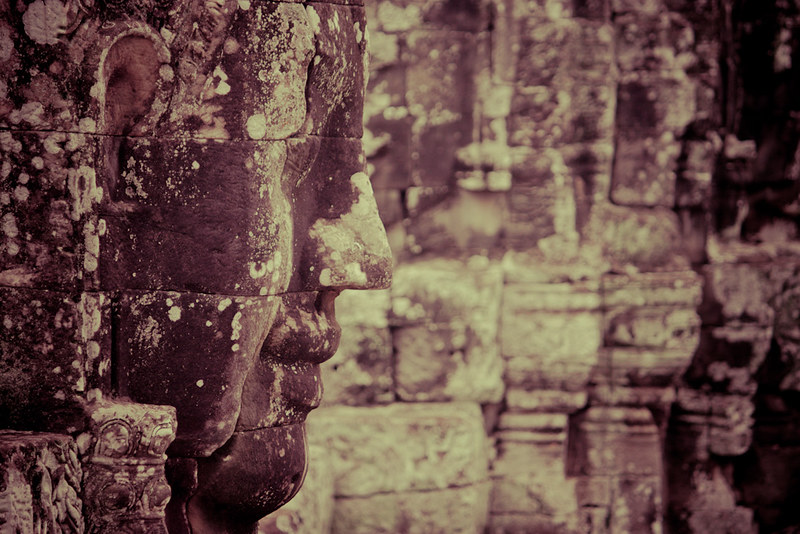

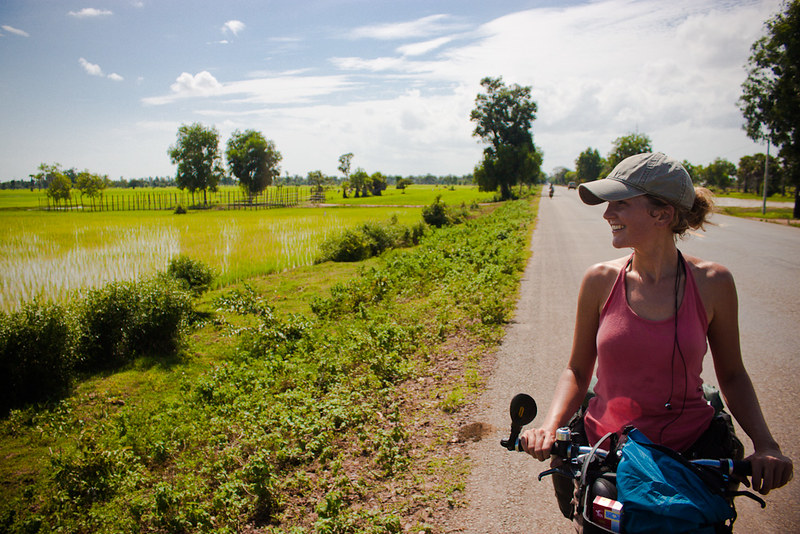
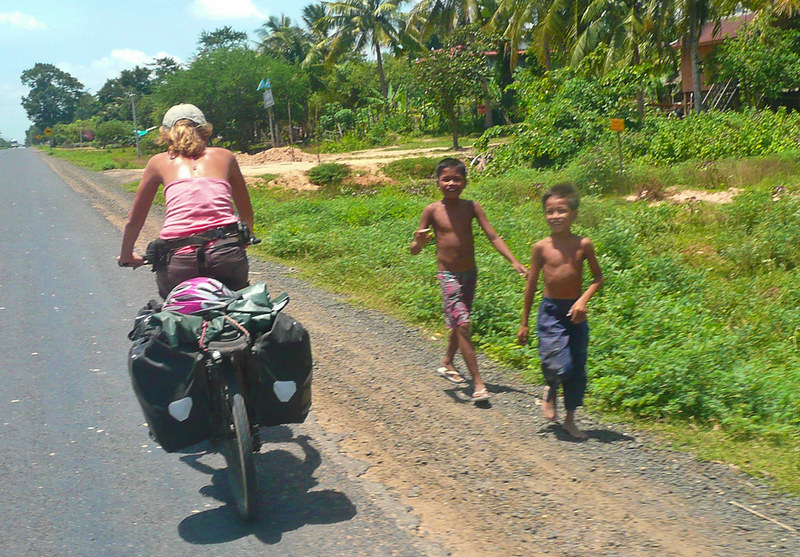

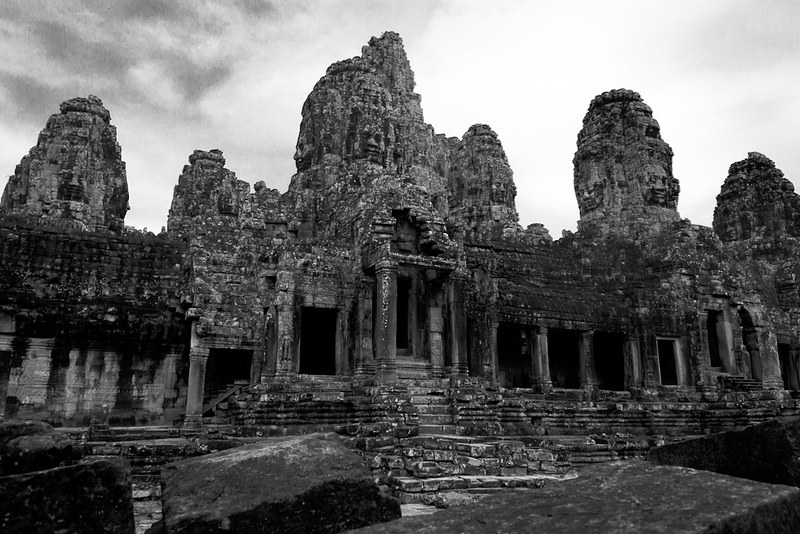
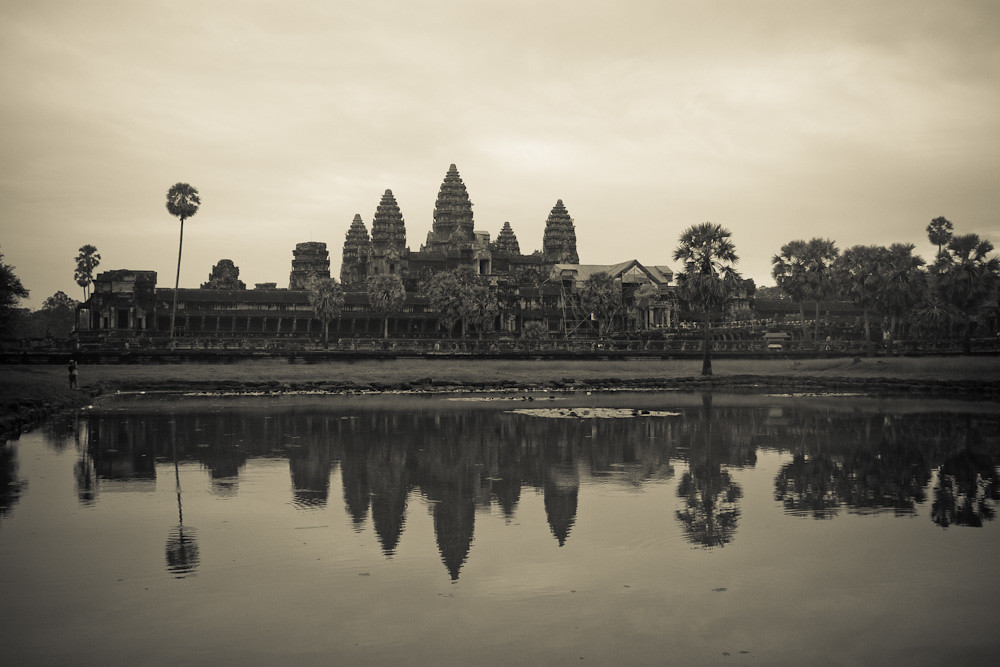


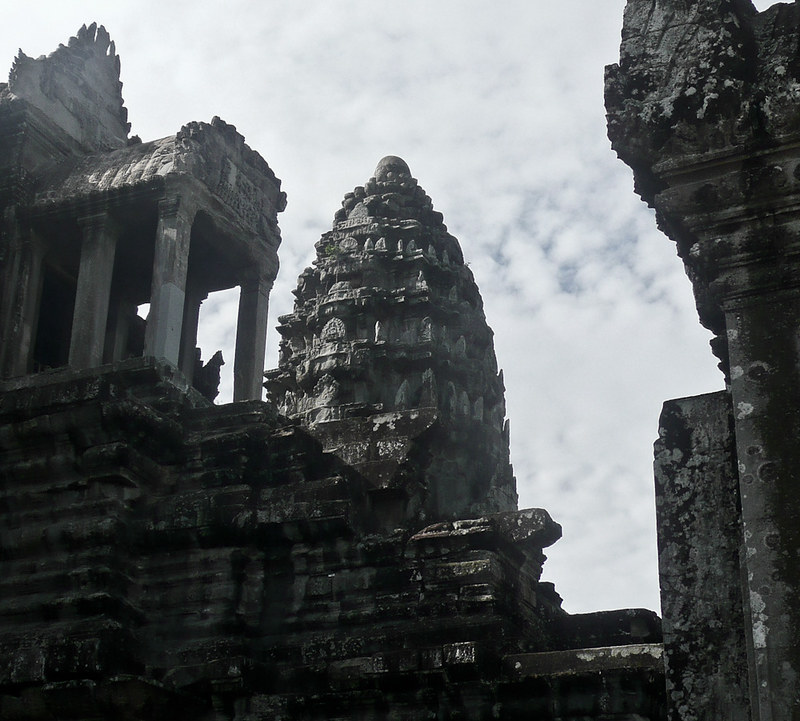
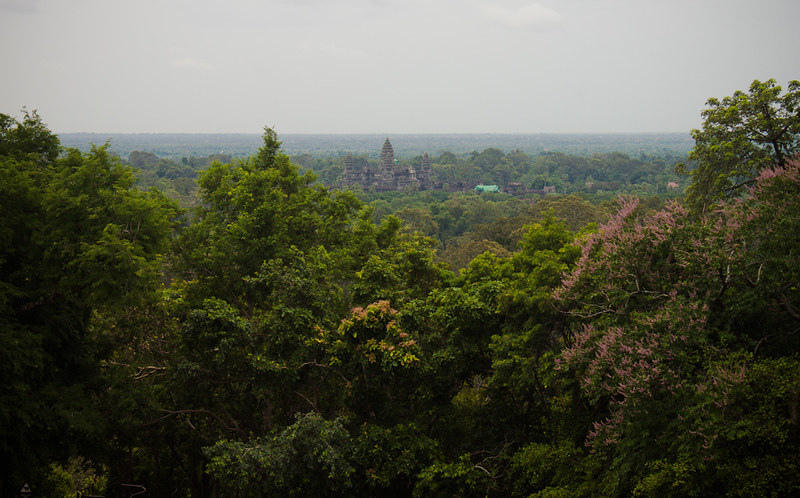

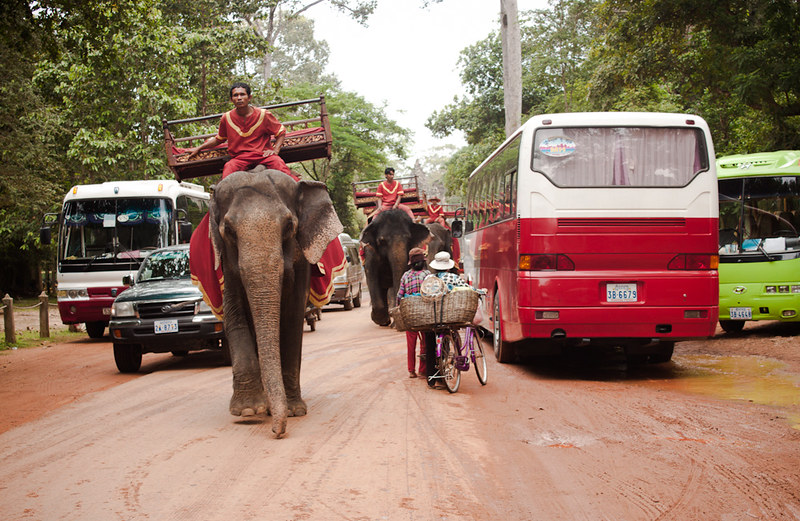

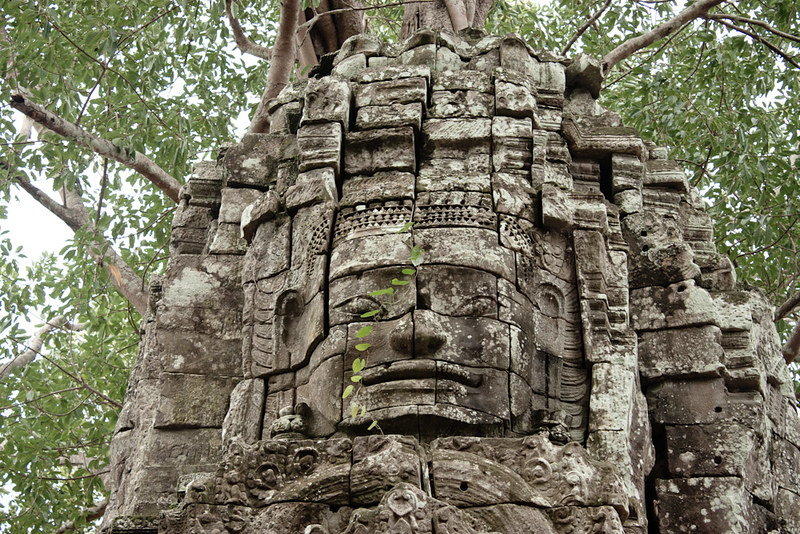



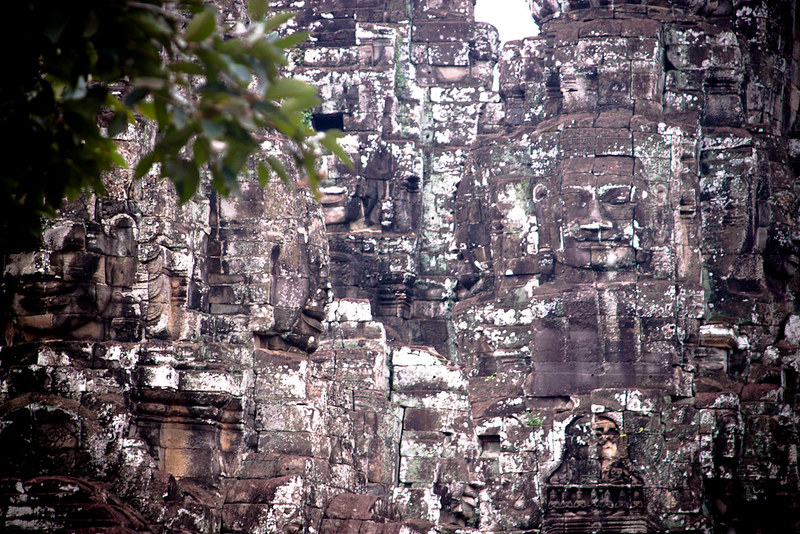
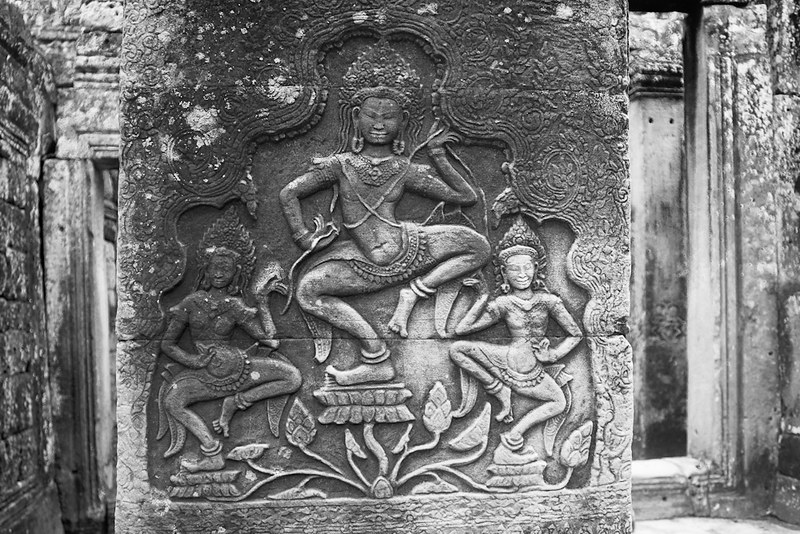

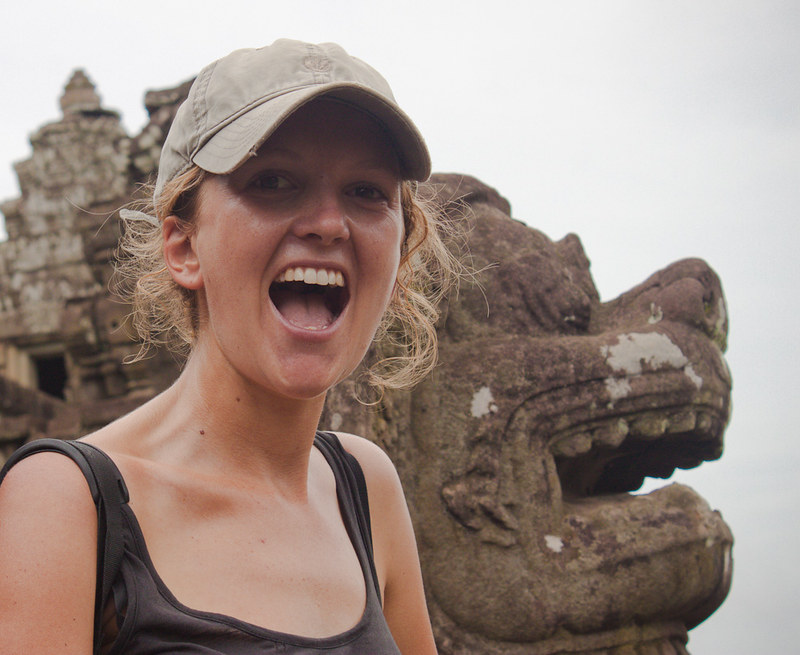


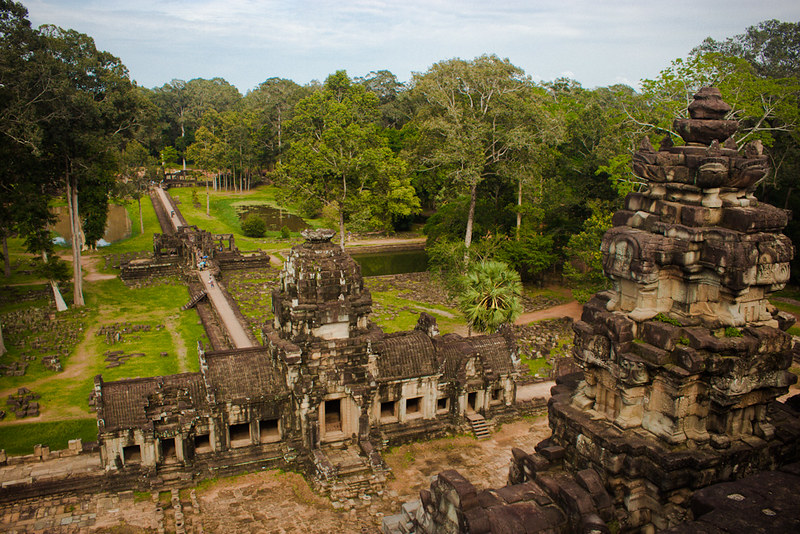
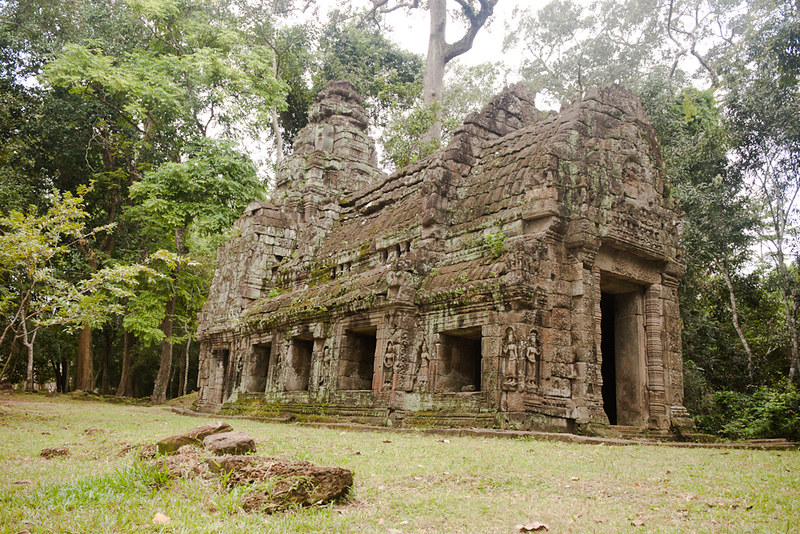
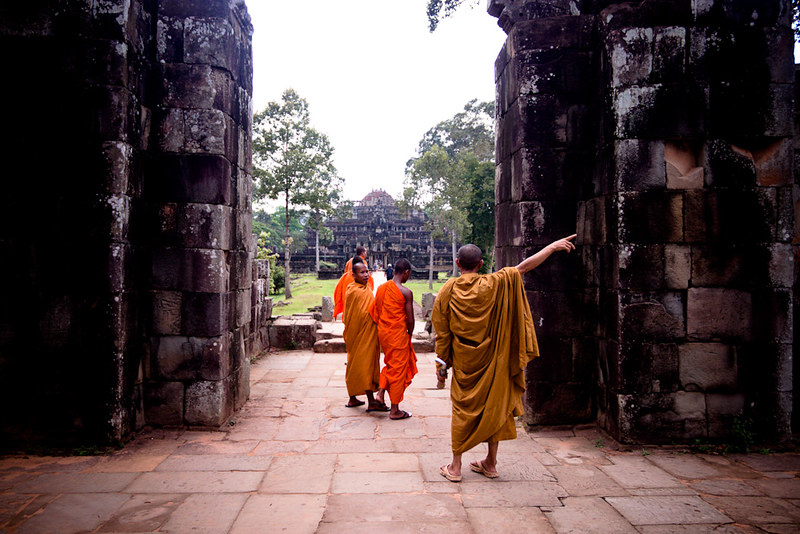
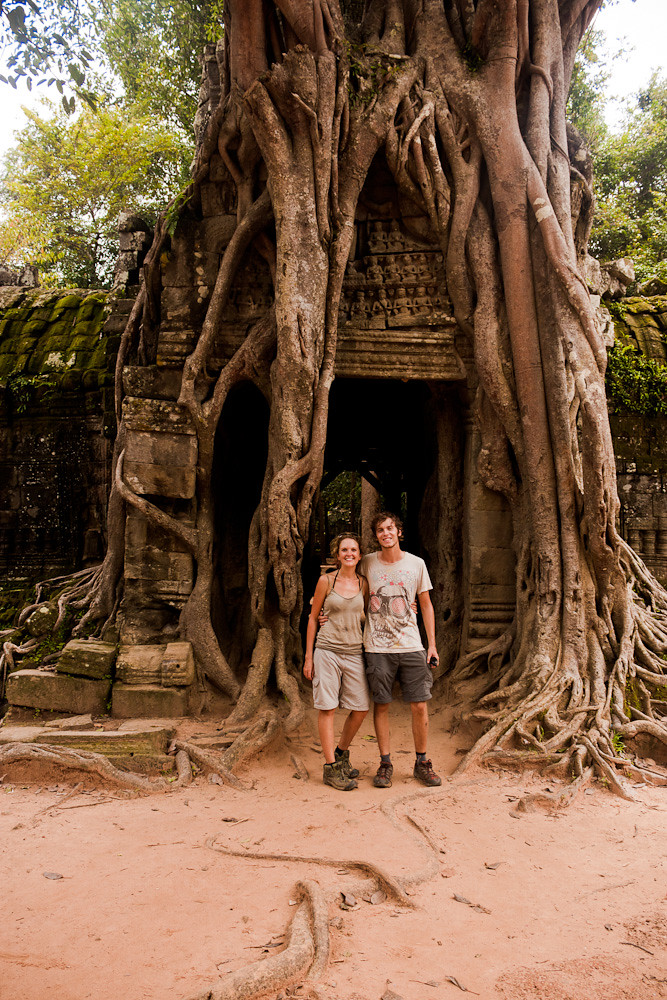


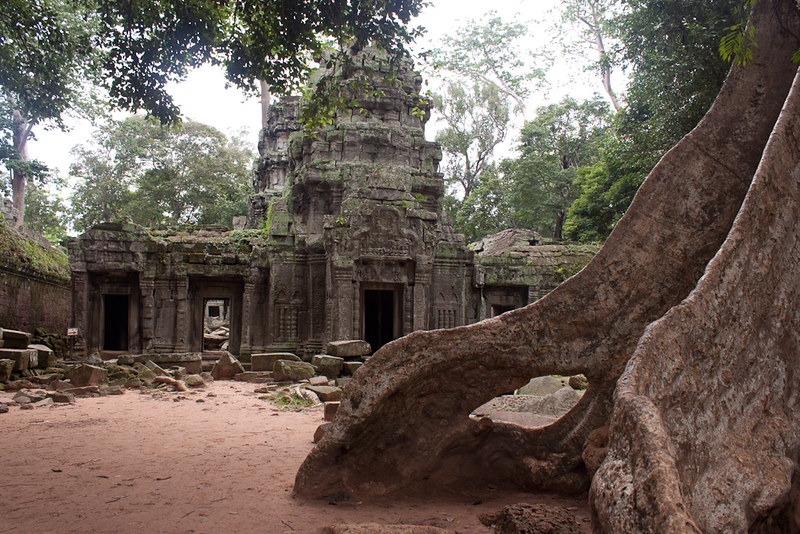
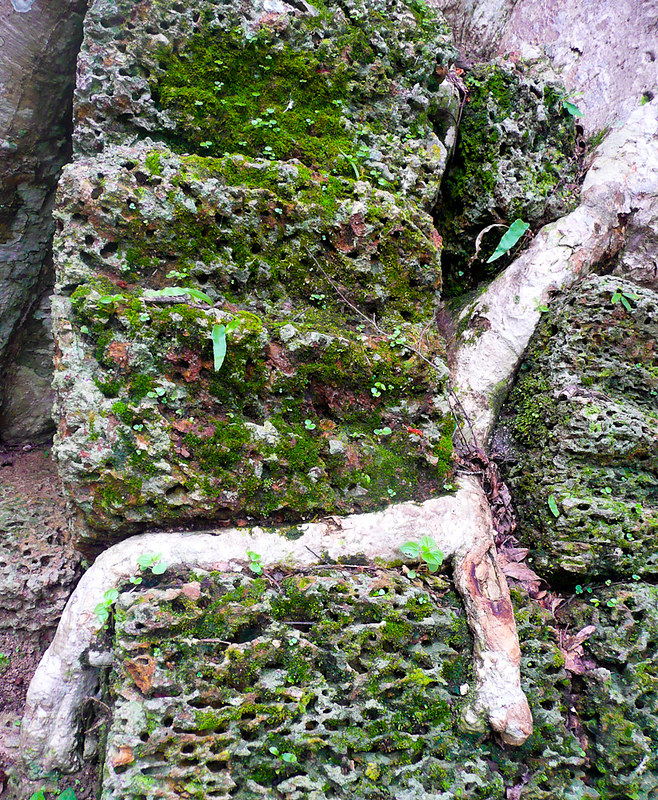

No comments:
Post a Comment